How to insulate garage ceiling under finished bonus room
I am finishing a garage and a bonus room above the garage in upstate NY. The 2 by 4 garage walls will be insulated with fiberglass bats, but due to the two 10 foot uninsulated steel doors, will not likely be warmer than outside temps in the winter. I do not plan on heating the garage. The previous owner insulated one side of the garage ceiling with unfaced 10 inch fiberglass bats and covered it with untaped sheetrock. There is no vapor barrier.
I received a bid to apply 3 inches of closed-cell foam in the garage ceiling joists. The R-value is advertised as 7 per inch. The salesman said the foam would provide a much better air and vapor barrier and would provide warmer floors in the bonus room than I could get with fiberglass bats.
My contractor suggests keeping the existing insulation and adding 10 inch, R-29, fiberglass bats to the other side of the ceiling. The ceiling would be sheetrocked, taped and painted. This option would be approximately $2,500 less expensive than the 3 inches of foam.
Should I choose the foam or the fiberglass insulation? Is 3 inches of foam enough? If I decide to go with the fiberglass, how do I get an effective vapor barrier on the warm side of the floor? Should I rip out the unfaced insulation and replace it with faced insulation?
Comments (44)
manhattan42
18 years agolast modified: 9 years agoVapor Barrier: A vapor barrier is required on the warm in winter side of the floor assembly, which means in this case, the vapor barrier would be placed up against the subfloor. It is possible and even likely that you already have faced fiberglass in the floor assembly and are only seeing the unfaced side from the garage below.
But presuming there is no vapor barrier, you could most easily add one by simply painting the surface of the subfloor in the bonus room above the garage with a vapor barrier paint.
Some plywoods, because of their glues, already qualify themselves as as vapor barriers ( a vapor barrier is defined as a a material that has a perm rating of 1 or less), so you may in reality need to do nothing.
Insulation: I am not a fan of spray foam insulations because of their costs and flamability issues. Although they will do the job of insulating and do the job well, they cost 3-5X more than high density fiberglass and will take many, many years to pay for before you ever see any savings in energy costs compared to conventional methods, if you ever see any savings at all.
Either way, New York State building code requires at least an R-21 minimum for floors, but I would recommend you insulate to an R-factor of at least an R-49, the same thickness as required for your ceilings for your region if you can fit it in.
rmslayer
18 years agolast modified: 9 years agoHi ogoopogo or anybody,
I have a similar setup like this already where I have a finished space above the garage. The space above feels cold in the winter. You mentioned about insulating the garage doors. How do I go about doing that? What materials do I use?
Thanks.
Related Professionals
Biloxi Kitchen & Bathroom Remodelers · Omaha Kitchen & Bathroom Remodelers · Panama City Kitchen & Bathroom Remodelers · Pasadena Kitchen & Bathroom Remodelers · South Jordan Kitchen & Bathroom Remodelers · Mansfield Interior Designers & Decorators · Arlington General Contractors · Galena Park General Contractors · Aberdeen General Contractors · Bound Brook General Contractors · Cumberland General Contractors · DeSoto General Contractors · Parkville General Contractors · Red Wing General Contractors · Villa Park General Contractorsmaltbie
Original Author18 years agolast modified: 9 years agomanhattan42, Thanks for the reply. I pulled out some of the existing insulation on the garage ceiling and have confirmed that it is not faced. Since the joists are 2X10, the most insulation I can fit in there is 10 inch R30. Will the floors be cold with only R30? Will insulating the garage doors help even though I will not heat the garage?
Do I need to remove the existing, unfaced insulation to get an effective air and moisture barrier? Can I apply a barrier on the floor side in the bonus room under the hardwood floors? I am concerned about exhaust fumes and other odors from my garage coming through the floor.
rmslayer, How much insulation do you have in your garage ceiling?
manhattan42
18 years agolast modified: 9 years ago"Do I need to remove the existing, unfaced insulation to get an effective air and moisture barrier? Can I apply a barrier on the floor side in the bonus room under the hardwood floors?"
I already answered that question in my previous post:
"But presuming there is no vapor barrier, you could most easily add one by simply painting the surface of the subfloor in the bonus room above the garage with a vapor barrier paint.
Some plywoods, because of their glues, already qualify themselves as as vapor barriers ( a vapor barrier is defined as a a material that has a perm rating of 1 or less), so you may in reality need to do nothing."
"Since the joists are 2X10, the most insulation I can fit in there is 10 inch R30."
Not true. High density R-22 fiberglass is made in 5" thicknesses. You could add 2 layers of R-22 in a 10" space and get an effective R-44.
Your state code requries an R-21 minimum floor insulation.
Bonus rooms above garages are notoriously cold because as much energy is transferred through their floors to/from the garage below as can be lost through the attic.It is best to insulated bonus room floors above garages to at least the thickness of required attic insulation for your region.
For New York State, this is an R-49, but since you can't achieve that with conventional fiberglass, you could achieve an R-44 with high density glass or other forms of insulation.
"I am concerned about exhaust fumes and other odors from my garage coming through the floor."
Building codes do not allow any penetrations between the firerated ceiling and wall assemblies in a garage below a habitable room above that would allow any noxious gases or flames to enter a bonus room above a garage.
manhattan42
18 years agolast modified: 9 years agoBy the way, insulated garage doors will do very little to help in keeping either the garage or bonus room above it warmer or cooler.
Insulated garage doors typical only add about an R-3.5 insulation, barely enough to make a noticeable difference.
A better way to assure a warm and cool bonus room is to condition the garage space below by heating it or cooling it as needed.
Otherwise, providing adequate thicknesses of floor, wall and ceiling insulation and limiting glass in the bonus room is the best way to conserve energy.
sue36
18 years agolast modified: 9 years ago"Insulated garage doors typical only add about an R-3.5 insulation, barely enough to make a noticeable difference."
Actually, there are garage doors readily available that offer an R value of over 17. We have them (from Overhead Door). Our garage has R21 insulation on all the walls and R38 on the ceiling. The master bedroom is above. We heat the garage to about 50 in the winter, primarily because of the pipes that go to the master bath.
psuskeels_hotmail_com
17 years agolast modified: 9 years agomanhattan42,
Thanks for posting this info - I had a question. I have a room above a garage as well - it's insulated well (R39) in the attic, but below I'm not sure (and the room drops temp quickly). There's drywall in the garage, and I drilled a 2 inch hole in the drywall and saw only the joists and plywood - no insulation. Do you think there's insulation above the plywood (?? vapor barrier??)? (FYI: I resealed the 2 inch hole so no fumes go up :)).
Thanks
rjoh878646
17 years agolast modified: 9 years agoIt sounds like you have no insulation under your floor. If you see the floor joists, and the plywood you see is the floor of the room above.
They don't put down plywood then insulation and another layer of plywood.
No wonder your floors are cold
pjb999
17 years agolast modified: 9 years agoThe simplest method of insulating a garage door I can think of, is to use styrofoam sheet, make sure it's the correct, fire-retardant type. The commercially insulated garage doors use styrofoam or the expanding foam within a double metal skin, which I guess is another option, pop-rivet gal steel sheet over the inner part of the door and inject the spray-can foam into the gaps. I suppose you could drywall the inside but it'd be to heavy and subject to movement. I disagree it'll make little difference, my garage door is insulated and it rarely drops below freezing in there, it must be 5-10 degrees difference.
I'm happy to have stumbled across this, as my garage was once a carport and is below my master bedroom. I can't imagine what it was like before the garage was closed in, as the floor gets quite cold.
Strangely, the garage ceiling is lined in thin plywood, not good for fire safety I'd think. (I'm in British Columbia) - I had been thinking originally of just putting drywall over it for safety but since I've been experiencing winter, I'm thinking perhaps a layer of styrofoam insulation I guess with battens, and drywall over that, would be the way to go. I had also considered buying cans of the foam insulation and drilling holes into the ceiling and squirting it up there, but I guess first order of business is to drill an inspection hole so I can see what's up there - I can't imagine there ISN'T insulation already, but I should see how much. This was a spec house, and they've definitely cut a few corners. I was lucky the previous owners splashed out on the insulated garage door, perhaps it was to attempt to address the cold issue upstairs. The room itself isn't bad, just the floor -and, in summer when the car's parked in there, I think it heats the room up uncomfortably.
It's a challenge to me, to make the house better, I already really like it, and its location and we got a good deal on it. I plan to 'double glaze' the panes of glass in the garage door with pieces of Lexan siliconed into place to replace the stencil shape things that clip in, the previous owners re-routed the dryer exhaust duct through the garage and out through the garage wall which adds a surprising amount of heat which would otherwise go to waste (I did consider the system that allows the dryer to vent via filter into the space but I know it's risky to add that much humidity, it's already a bit of a problem with condensation when the ice and snow all over the car melt in the garage with nowhere to go (I really wish it had a floor drain) Also on the list is a concrete sealer, probably that Rustoleum speckle paint stuff.
I may add some length to the dryer duct to milk more heat from it, and will put one of those airflow-controlled butterfly things on the inside part of the vent out through the wall (when it gets towards -20C I get frost on the part of the duct closest to the outlet.
I know escaping heat from the house is helping somewhat to heat the garage by default and by insulating the ceiling I may end up making the garage cooler, but since it will also serve as my workshop, I'll be putting some form of electric heating in there (there's just a plug-in heater for now, our stuff arrived (we moved from overseas) and I don't want it getting too cold in the garage, since that's where a lot of it's stored for now....
Fortunately, to do the ceiling I don't need to move much, just the garage door opener - I'll just cover over where the brackets for the side tracks fix up there now.
Of course, adding a subpanel in for power, ideally with 220v will be part of the plan, so I may want to put that in before the ceiling if I need access up there, but I suspect I'll be coming in through the wall, there's not a lot of room to route it anywhere else. One circuit supplies two outlets in there, one outlet already has the garage door opener, and the other is serving temporary duty powering the central vac - they'd originally roughed it in, in the furnace room, both illegal and stupid....imagine the explosion hazard the dust poses, so I extended the pipes into the garage and ran the outlet for the vac out through the wall.
So those are the plans so far, anyway. It's a small garage and we don't have much storage at all, so I'm going to have to be really smart how I set it up.
It's such a pity, when I left Australia, I literally gave away a whole bunch of Dexion (the slotted/drilled angle bracket stuff they build shelving out of) and chipboard, everything I needed to build shelves and workbenches in a garage!
Any clever ideas are most welcome :)
mightyanvil
17 years agolast modified: 9 years agoAir leaks are the reason most fiberglass solutions don't work well for garage ceilings. Spray 3 inches or more of foam against the bottom of the subfloor and fill the rest of the space with the old fiberglass and replace the old GWB ceiling. That addreses all of the issues with the least labor cost.
pjb999
17 years agolast modified: 9 years agoWhy are air leaks a particular problem in garages? Is it because of the garage door seals?
james_cooper_fmr_com
17 years agolast modified: 9 years agoI have been spent thousands of dollars and countless hours addressing a similar problem on my house in the Boston area for the last 2 years. I finished a bonus room above my garage and it has always been COLD. I have made several attempts to remedy the problem: 1) put large space heater in garage, 2) insulated garage walls, 3) installed turbo fan boosters to central heating system for the room and 4) insulated bonus room walls with icynene spray foam insulation. The experts will tell you that bonus room heating issues are due to 1 of 2 things - not enough heat going to the room or improper insulation. For my situation it is no longer a question of whether I have enough heat going to the room...I do. The more common issue with these rooms is the one that was described earlier in this forum; its the garage ceiling. My contractor installed R-30 fiberglass batts in the ceiling and it didn't matter...the bonus room floor is cold to the touch. I have spoken with several independent building engineers that have been featured in publications and TV. Their consensus is that I need to remove the R-30 from the garage ceiling and replace it with the spray foam. The reason for this is that fiberglass batts, no matter how well they are installed are notorious for allowing air to leak through the cracks that exist around them. That cold air travels to/from the garage to the bonus room creating the issue. Icynene spray foam does not allow air to leak and creates a barrier by expanding into every nook and cranny of the space. I mentioned earlier that I had the foam installed in the bonus room knee walls as one of the remedies. I neglected to mention that this worked fairly well and that there was a noticeable difference in temperature when using a thermal camera before and after the foam was installed. The building engineer did warn me that I would likely need to do the garage ceiling but I preferred to try to fix the problem in stages. Wish I had done it differently in hindsight. I would highly recommend that anyone experiencing this same problem consider this as an option if you're confident there's enough heat going to the room. I believe its the last thing keeping us from a comfortable winter.
kaytes
17 years agolast modified: 9 years agoGreat post coopsyall. Thanks for the info.
I have the same issue. I was planning on sprayfoaming in between the joists but a guy in the heating trade told me that for the same amount of money to get it sprayfoamed (and time/labour), I should just put in a natural gas radiant heating tube in the garage. This will not only heat the garage but also keep the floor of the bonus room warmer. A heated garage would be nice so it peaked my interest but little red flags are popping up in my head.
I don't have the budget to do both, any opinions??
pjb999
17 years agolast modified: 9 years agoKaytes,
I think heating your garage as a form of insulation as opposed to actual insulation is ecologically (and probably economically) reprehensible.
Don't forget, you'll be paying to run the thing ad infinitum on top of the install cost....also if the garage is uninsulated you may get ice issues/ice damming on some parts which can cause problems.
Personally, I'd go with the insulation. You can always buy a cheap electric heater and set it to come on only when it's really cold, then consider gas heating down the track. I agree from a user point of view, a heated garage is a bonus.
My garage has an insulated door, thankfully the previous owners had the foresight to do that. I plan to improve on that somewhat by using lexan or plexiglas to double-glaze the door windows.,,,,they also re-routed the dryer vent pipe through the garage, you'd be surprised how much that heats the room, especially considering it's "free" energy since it would have gone to waste otherwise.
kaytes
17 years agolast modified: 9 years agoActually the ceiling of the garage is insulated with R-30 and has a VB. The problem is that they left an air gap between the joists of the floor and the subfloor of the living space above. They did however insulate and vapour barrier the ends of the joists. They said the heat from the ducting that runs through the joists (that service the living area above) would provide enough heat to make the floor temp comfortable. It doesn't. I live in the Canadian prairies where it can go to -35 (Celcius not Farenhiet). From what I have read the proper procedure would be to remove the batt insulation, sprayfoam in-between the joists with r-25, then re-install batts and finish with 5/8" drywall. This with a heated garage would probably be the cadillac. Although I'm open to other suggestions
BTW: You mentioned your dryer vent is flowing into your garage. I would think there would be a lot of humidty and risk of mold in the garage.
kaytes
17 years agolast modified: 9 years agoNo Hijack, I thought you and coopsyall pretty much answered the question so I was just building on the thread with my own question.
Your thought on batt insulation and air leakage is not just related to garage ceilings. Without a proper air barrier, batt insulation R value is quite meaningless.
diyeditor
16 years agolast modified: 9 years agoI have a similar issue with my home that was built in 1998. My bonus room (22x22) is over the garage and is pretty hot in the summer and freezing in the winter. A complete waste of 480 sq feet. There are 3 air vents in the ceiling of the room and although the other room upstairs are in perfect temperature control,the bonus room is uninhabitable most of the time.
Two of the longer walls follow the roof's pitch line and I though that could be the problem but the walls always feel fine. We have replaced the two double hung wood windows with double hung low E vinyl windows but that didn't do a thing. The exterior walls have Masonite which is now covered with foam board insulation and new vinyl siding. So with these areas ruled out, I now realize it could be that the floor is not insulated between the garage roof and the sub-floor. I already have 2-9' fully insulated garage doors and it's still pretty hot and cold during the seasons(Knoxville,Tn).
Considering how unbearable it is, I was assuming there was no insulation between the floor and ceiling but it looks like from this forum, there could probably be something in there, just not enough. So it looks like I need a lot more.
It would obviously be a big pain to remove the laminate flooring, poke holes or tear out the sub-floor and add insulation and the ceiling in the garage is completely covered by painted drywall. So what about adding an additional ceiling to the garage? I have 9-1/2 'ceilings in there so adding an additional 6-12"(depending on insulation process) would still leave plenty of clearance.
My idea is to frame the existing ceiling with 2x6's(or whatever code might be) and add spray foam insulation or traditional fiberglass and then put up new drywall. Any opinions on this would be greatly appreciated. I am going to test that the garage is the culprit by heating the garage for a couple of days this winter with a portable heater and see if that affects the usually cold temps in the bonus room.
pjb999
16 years agolast modified: 9 years agoDIY, the heating test thing sounds like a good idea, it ought to narrow it down. My garage stayed above freezing almost all of last winter, I think it was a combination of the insulated door (not sure of rvalue but must have made some difference) the heat leaking down from the master b/r above, other heat leakage, the dryer vent pipe (no it doesn't exhaust into the garage which would, I agree, be a bad thing, but vents outside, but the pipe gives off a lot of radiated heat.) Lastly, the car parked in the garage gives off quite a lot of heat, which just helps to keep that temp up. I do plan to have a garage heater set to come on just above freezing, I'll have quite a bit of (water based) paint stored in there which I imagine doesn't like being frozen, not to mention needing to go in and out of there for stuff, often.
I will follow this thread with interest. Finances permitting, I want to do some work in mine before winter sets in....
diyeditor
16 years agolast modified: 9 years agopj999, great idea with the parked cars warming up the garage. That will save me buying and returning a big portable heater. My garage never gets near freezing temps but then again, I live in Knoxville. The coldest we have recorded in the bonus room was 48 degrees and that was at night.
It actually might be colder this winter if the garage is the troublemaker because we put the double hung-Low E vinyl windows through the entire house so that'll actually keep out the winter heat the sun usually provides in the garage with old windows. I purchased a laser thermometer while they were installing the windows and the old wood window with argon gas had a reading of about 120 degrees from the inside of the garage. Then I tried it on the new window and the Low E technology brought it down to 84 degrees. The outside temp was actually cooler than that by a few degrees but my point is, that the old windows let in more heat. Without the garage being part of the HVAC system, it'll actually probably be colder. I'll stay in touch and let you know what happens.maltbie
Original Author16 years agolast modified: 9 years agoI am the original poster of this thread. After experiencing a full winter in the finished bonus room, I wish I had used the foam as suggested by mightyanvil in his Jan. 07 post. I ended up using 10 inch R30 fiberglass batts and 15 lb. felt under the hardwood flooring. The garage celing is covered with 5/8 inch drywall that is taped, sealed and painted.
The 20 feet of hot water baseboard heating had no problem keeping the room toasty warm last winter. The floor was always cold, however - almost too cold to walk barefoot.
Parking the warm car in the garage in the winter did not seem to help warm the floor.
I am having a home energy auditor perform a whole house audit. I will decide what to do, if anything, about the cold floors after the audit. Diyeditor's idea of adding a second ceiling filled with foam sounds interesting.
worthy
16 years agolast modified: 9 years agoThanks for the posting!
I wish I had been on earlier to confirm mightyanvil's sound advice.
It confirms what I have found as a licenced builder. Even when I've foamed the rim joists and added a supply and return to the space above the garage, the floors remain cold --and the room is warmer in the summer than the rest of the home.
On my last project I used 4" of BASF closed cell, covered with 5/8" drywall mudded and taped. It cost a lot more than fiberglass and a useless vapour barrier, but this was a custom home and the buyers paid for the best. I also used sprayed close cell on the basement walls and some nooks and crannies here and there.
The only reason you don't see more spray foam insulation is cost. Builders are not going to put money into something that is not required, not seen and that only one in a 100 customers understand.
(And there are always lots of armchair advisors who will dream up a hundred and one ingenious ways to supposedly do the same job at half the cost.)
worthy
16 years agolast modified: 9 years agodiyeditor "My idea is to frame the existing ceiling with 2x6's(or whatever code might be) and add spray foam insulation or traditional fiberglass and then put up new drywall."
This will not address the lack of air tightness and insulation along the rims. More fiberglass won't help much; just more filtering of air infiltration. I would bet that you'll still have cold floors in the winter when you're done.
dianebarry_comcast_net
16 years agolast modified: 9 years agoWe have a variation of the situation everyone else has described: we are in the process of finishing the bonus room over our unheated garage. The builder did not insulate the area between the sub-floor of the bonus room and ceiling of the garage. He insisted it didn't need it and you would never put insulation between two unfinished spaces. The garage ceiling is drywalled and taped. There is plywood sub-floor in the bonus room.
What is the best way to get this area insulated with the least disruption? If we go with a spray foam, how is it applied? Do they just drill some holes in the sub-floor or do they have to pull them all up? If they have to pull up all the subfloor anyway, is there a better insulation to go with? Also, as this room will be a multi media room (and my husband's music studio), sound-proofing would be helpful (in walls, floor and ceiling)any thoughts? PS We live in Connecticutworthy
16 years agolast modified: 9 years agoHe insisted it didn't need it and you would never put insulation between two unfinished spaces.
When the room is finished, you'll sure need it!
I know it's messy. But tear down the drywall, have at least 4" of closed-cell foam sprayed in and re-drywall. Anything else will not work satisfactorily.
Check the building forum for extended discussion and suggestions. For an existing wall--unless you're going to the extreme--add another layer of drywall on Green Glue or equivalent or a layer of Quiet Rock or other constrained layer damping drywall, e.g. this product from National Gypsum. Seal around penetrations--receptacles etc. with special sealant, use acoustical sealant at the perimeter--and bring on the noise.
yvong
16 years agolast modified: 9 years agoHello All,
I recently moved into a house (see pictures attached in the link provided). During the summer months, the room above garage is cool, and in the winter, the room was FREEZING (the floor was very cold!) we had to get a heater to heat it every night.I recently contacted a contractor who came in, and suggested that the only solution is using spray foam 4" to R29, and also 2" for the heat ducts. He told me the builder probably used pink/fiberglass insulation just to meet minimum code. The quote said they would come in to spray but I had to tear down the dry walled ceiling. He assured me that after the spray, the room upstairs would be warm and cozy! So before signing with him, I decided to open up the ceiling to see what's going on inside.
Once I opened it up, I was shocked to see that there is already spray foam at the ceiling below the room, even the ducts are covered. Now I am confused! If there is already foam sprayed why is it still cold? Can I help the situation by adding some fiberglass insulation, how thick?
There are so many homes with room above garage, surely there is someone who has got this figured out, and enjoying the warm and cozy room above the garage! Then again, maybe they would not be looking in these forums for help!
Anyone who knows someone got this problem fixed, your suggestions/advice would be greatly appreciated!
yvong
Here is a link that might be useful: Room above Garage Still COLD with Sprayed Foam
worthy
16 years agolast modified: 9 years agoThat looks like open cell insulation. It has a lower R value than closed cell foam, R3.5 vs. R6. But it still looks adequate for the job.
I can't tell from the photo, but I suspect the foam was not sprayed along the rim joists at the top edge of the garage ceiling.
Or it may have been sprayed in the winter. When I've used open cell in that manner, it shrank back from the surface and I had to fill the voids with spray cans the best I could.
It's possible, too, that the cold air might be coming in from under your baseboards if insulation was missed in the walls.
Since the contractor you spoke with was aware of best practices, you might have him check the garage ceiling carefully to see where the foam has shrunk back or was never sprayed in the first place. A smoke pencil might help you locate the leaks.
worthy
16 years agolast modified: 9 years agoIt may be be just that there isn't enough foam over the entire ceiling. In the last photo, I can see your subfloor isn't even covered. At R3.5 an inch, you should have a minimum of 5-6inches of foam everywhere. You can't "average" 8" in one area and 1/2" in another.
freedee
16 years agolast modified: 9 years agoI used a product called Tiger Foam, to do spray foam insulation myself. Even if you do it yourself, it's not cheap, but it's effective. But be warned, it sticks to anything! You need to protect all surrouning surfaces. Forget about cleaning it up latter. I got some on my hair. I had to wait for it to grow out.
stockrex
16 years agolast modified: 9 years agoI have the same problem, 1957 raised ranch, the bedrooms are above the garage and over the years garagae installs and electrical upgrades have left holes all over the garage ceiling, it has some batting, like 3 inchs
I have considered tigerfoam (which I used in my bedroom walls) but the void is TOO big and will be $1600 atleast.I have seen paper with glue in it, over time it won't settle and prevent air infiltration.
is there DIY system for paper with glue?
southj8_gmail_com
16 years agolast modified: 9 years agoI have read the many posts and appreciate everyone's comments. However, it appears most of the postings are dealing with a COLD bonus room in the winter. My home is in the southeast. Not much problems with Freezing in the Winter---only get about two weeks of deep cold temps per year.
The home we purchased three years ago has a finished bonus room over garage (22x25) that gets REALLY HOT during Spring, Summer, and Fall. I'm a computer guy by trade, so am building skills challenged. I can see insulation around the bonus room in the attic. My initial assumption was that the Heat was coming from the attic. Except one evening when temperature was HOT in the bonus room, I stepped in the attic expecting a similar temperature only to find that the attic was quite COOL. The next logical place for the heat was from the stairway and garage. Have noticed a slight difference in heat when the door at stairway remains closed, but still bonus room is unbearable. One other item, the bonus room has two AC/ducts that seem only to be partially effective if 40% of the AC/ducts downstairs are closed.
Is insulation of the garage doors and ceiling (foam, traditional, or otherwise) and/or cooling the garage a good candidate for addressing this problem as well?
worthy
16 years agolast modified: 9 years agoInsulation works both ways. Improperly insulated rooms over garages that are cold in winter will be hot in summer.
I don't understand why your attic would be cool unless the insulation is directly under the roof rather than on the floor.
yvong
16 years agolast modified: 9 years agoHi Worthy,
Thanks for your feedback. Sorry for taking so long to reply. I have over the last few weeks spoken with a few other people, and have now confirmed what you thought. The existing foam insulation is Icynene which is 1/2 lb open cell foam.
The guy who gave me a quote for the 2LB closed cell foam, and I have decided to have them spray it for me this coming wednesday. I'll let you all know what happens after that. I'll also take some pictures and post it here to show the before and after...
One thing I am now worried about is that if they spray the foam in the cold weather and then the foam shrinks, I will be back to square one again. It's already cold November now.
Anyway, wish me luck, and I'll be back to give you an update after wednesday.
yvong
worthy
16 years agolast modified: 9 years agoLooking forward to seeing the photos. When I'm building I'm so busy I forget about taking photos, so I usually have only pics of demolition and completion!
To get better air flow to the bonus room, you may need duct booster fans. See how the extra insulation works first.
vinodh
16 years agolast modified: 9 years agoHello Yvong!
I have similar issues (my master bedroom over garage) and its temp. is as good as the one on the street.
Hey - How did the spray foam work...Please update us.
Rgds,
Vfreedee
16 years agolast modified: 9 years agoI posted before about using tigerfoam. I used in in my addition. My garage ceiling was sheetrocked by my builder, and I'm sure he did the least he could get away with. Part of my bedroom is over the garage. I'm thinking that they didn't used to build living space over garages before. Now we all see why. If someone could figure out how to retrofit insulation onto a sheetrocked garage ceiling, that would be great.
For stockrex, you don't have to fill the entire space for the Tigerfoam to be effective. Just a few inches will probably stop the air leaks. Then, you can fill the rest with the same batting that you take out, if it's clean.
I think that it's best to figure out where the airleaks are coming from first. My powder room shares a wall with my garage. It was always cold before we renovated, but now it's freezing. When I had a wall mount sink installed, I decided to have an access panel behind it in the garage. Cold air was flowing in through the electric plug. I sealed that. It's better, but the walls are still very cold.
rocky08
16 years agolast modified: 9 years agoI read through this entire post and noticed that nobody mentioned zoned heat systems. If your bonus room only gets heat when the living room thermostat calls for it, then of course the bonus room is going to stay freezing because the bonus room will lose heat much faster than the rest of the house. You need to have a separate thermostat in the bonus room and ductwork with electric flaps to open/close as the thermostat calls for heat.
worthy
16 years agolast modified: 9 years agoYou can also use duct booster fans. But over the long run, it's more economical to use passive methods.
I'm waiting to hear from Yvong too. Now that the thread is pushed up, maybe he/she will see it.
lagrangehill_yahoo_com
15 years agolast modified: 9 years agoWe just built a three-car detached garage. I am looking at options for insulating and heating the second floor bonus room for my husband's man cave!
Thanks to all of the posts here, I have a better idea on insulating options. Unfortunately, there doesn't seem to be a perfect solution.
For heating, one option we looked into was a heated floor. After pricing it out, it came to about $2000+ and that was with us doing the installation. We had ruled it out, but now I'm thinking it might be worth doing if it means the space is usable and comfortable. We will be putting in a separate furnace or heat producing fire place.
Also, does anyone know about proper installation of insulation on the roof and knee walls to allow for proper air circulation? Our roof has ridge vents. I read something about rafter vents/baffles, but I don't know how they work or how many to install.
HazelJosephine
12 years agolast modified: 9 years agoIn order to fill space under ceiling you need to fill that space through concrete. In order that space is beyond your reach then you should ask to an expert.
mpg09
12 years agolast modified: 9 years agoI have recently got my garage ceiling insulated. The contractor created a hole for each cavity between joists and blown in cellulose for the entire ceiling. Huge difference now. It is much better. The bedroom is usuable now.





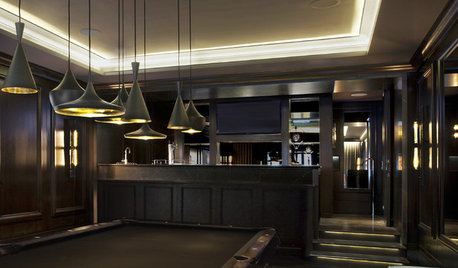
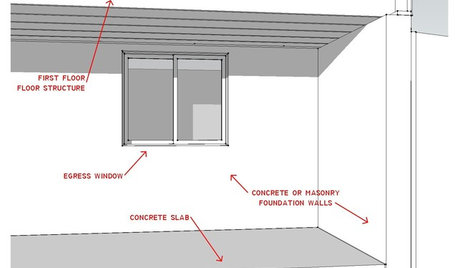
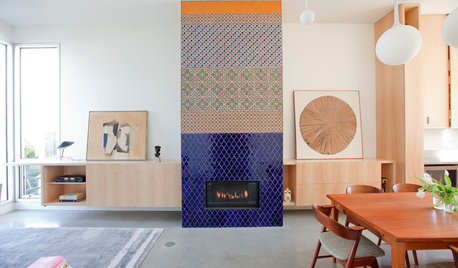
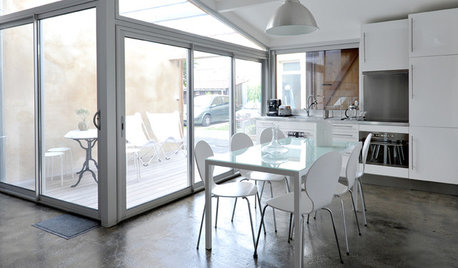
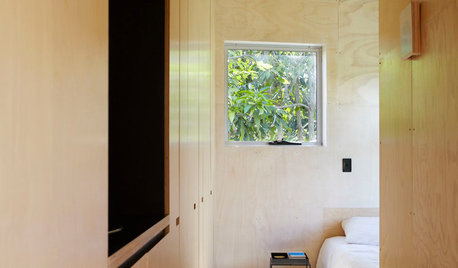






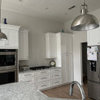
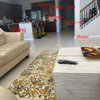

maltbieOriginal Author